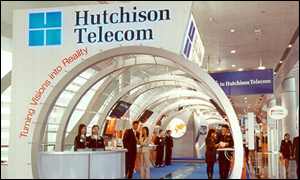| You are in: Business | |||||||||||||||||||||||||||||||||||||||||||||||||||||||||||||||||||||||||||||||||||||||||||||||||||||||||||||||||||||||||||||||||||||||||||||||||
|
Monday, 4 November, 2002, 12:46 GMT
Hutchison admits 3G delay

Hutchison 3G "can't be sure" of meeting target
Telecoms group Hutchison 3G has admitted it might not meet its target for delivering next generation mobile phone handsets.
The company, part of Hong Kong group Hutchison Whampoa, had hoped by the end of the year to deliver handsets for third-generation, or 3G, services.
The news coincides with new research suggesting that picture messaging could also be slow to take off in Europe. The author of the research, Strategy Analytics, warned that high handset prices and poor communication between different phone networks remain key barriers to success. Picture messaging is seen as a vital stepping stone to 3G services, by whetting customer appetite for more sophisticated mobile services. Hold up Hutchison 3G said it was working on "a number of minor elements" before being able to give a definite launch date for the sale of its new phones. "We can't be certain that these handsets will be on sale by the year end," said a spokesman for the group. "We want to make sure that our customers get 100% service before we launch." News of the delay comes despite the group insisting that it would have paying customers in the UK and Italy by the end of the year. Picture of health? Strategy Analytics meanwhile suggested that costs and poor network issues were critical to the success of picture phones. The research group's survey of global mobile camera phone sales found that the leading market so far was the Asia Pacific region, with 9.2 million handsets sold during the first nine months of 2002. Within that region, Japan and Korea were the biggest markets by far. Western Europe came a distant second with just 200,000 handset sales over the same period. Pricey handsets Strategy Analytics said the new phones' high price tag - around $300, despite manufacturer subsidies of up to $400 a handset - was a "huge barrier" to lifting sales. It added companies that can drive down the costs fastest will win the greatest market share. Average handset prices need to fall to between $100 and $150 in order for the new technology to penetrate the mass market, the research found. Strategy Analytics added that Nokia had an early leadership position in Western Europe with the launch of its Nokia 7650 phone earlier this year. However, demand for the Nokia 7650 has been "moderate" so far this year.
|
See also:
22 Aug 02 | Business
11 Jul 01 | Business
19 Apr 01 | Business
15 Jan 01 | Business
21 Nov 00 | Business
31 Oct 00 | Business
Internet links:
The BBC is not responsible for the content of external internet sites Top Business stories now:
Links to more Business stories are at the foot of the page.
|
|||||||||||||||||||||||||||||||||||||||||||||||||||||||||||||||||||||||||||||||||||||||||||||||||||||||||||||||||||||||||||||||||||||||||||||||
|
Links to more Business stories |
 |
||
| ----------------------------------------------------------------------------------
To BBC Sport>> | To BBC Weather>> | To BBC World Service>> ---------------------------------------------------------------------------------- © MMIII | News Sources | Privacy |